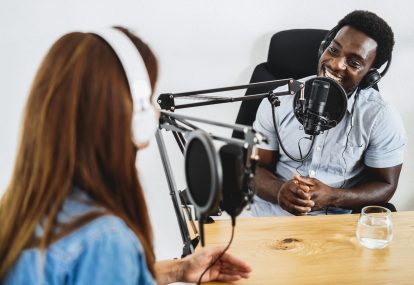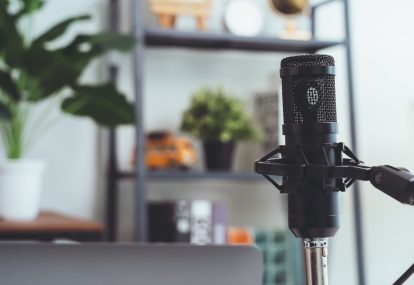When it comes to podcasting, providing great content alone won’t cut it. While crucial, awesome content would be worthless if your audio leaves much to be desired. Not everyone may be aware of it but in the podcasting world, great audio is just as important as compelling content.
Fortunately, there are plenty of strategies you can adopt to significantly improve the sound quality of your podcast and we’ve outlined some of the most beneficial ones below.
Record in a room that is quiet and has plenty of space
Before you start recording, look for things in your surroundings that are likely to make noise. Can you hear mouse clicks while recording? Cell phones? Pets? Computer fans? I’m pretty sure you get the drift.
Also, use your headphones to figure out what your mic is picking up before you start recording. As much as you can, keep unwanted noise to a minimum. A cleaner recording will be way easier to edit later on.
In addition, be mindful of the acoustics of the space you will be recording in. Surfaces that are hard and flat will reflect sound in the same manner a mirror reflects light.
To minimize reflections, make sure you leave space around you and your microphone. Set it up near bookcases or on a carpet and away from walls.
Consider indirect microphone placement
The burst of air that exits your mouth when you make the “B” and “P” sounds are called plosives and they can appear like giant gusts of wind to your microphone.
To abate plosives, use a pop filter or a windscreen and refrain from talking directly into the front of your mic. Also, consider setting your mic up slightly to the side.
Don’t shy away from experimenting with microphone placement until you find one that will work best for you.
Stand when recording
Sure, sitting down while recording sounds way more comfy. However, many voiceover artists and broadcasters stand when recording so they are able to provide a confident and strong read and better air support. Standing can also dramatically reduce reflections caused by your desk.
Be conservative when it comes to levels
To ensure you are able to set a modest and good input level, aim to speak at a speaking voice that’s normal-to-loud and make the level around -20 dB or around halfway up on most meters.
Test with an emphatic phrase or a hearty laugh to ensure the level does not peak beyond 0 dBFS. If you think it might, consider turning it down and staying conservative.
Do a test recording
Before you record an entire podcast, it will be a good idea to do a test recording first. Or if you find that too much of a hassle, listen to a few of your prior recordings and compare it with other podcasts with impeccable sound quality. Take notes if you must of the areas you need to improve on. Do you hear unwanted noise that should have been removed? Does your read appear to trail off at the end?
If you are not able to achieve the audio quality you want on your own, don’t hesitate to invest in the help and expertise of seasoned podcast editors. Not only will it save you time and effort (and spare you from a lot of headaches), you can also rest assured you’ll be able to deliver something that’s remarkable, polished, and professional.
What audio challenges have you encountered so far and how did you resolve them? Feel free to share with us your thoughts in the comments section below.
Share this post!




